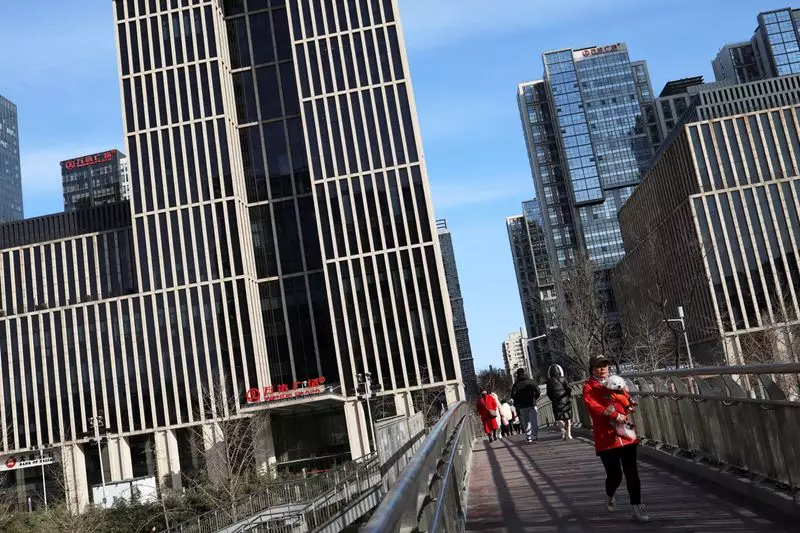China’s parliament is set to convene and unveil moderate stimulus plans during the annual meeting scheduled to begin on Tuesday. Premier Li Qiang is expected to outline economic targets for the year and present his first work report to the National People’s Congress (NPC). The focus will be on stabilizing the economy amidst a property crisis, deepening deflation, a stock market rout, and mounting local government debt woes.
Analysts and policy advisers anticipate that the NPC agenda will prioritize near-term support for the struggling economy rather than unveiling bold policies to address the country’s deep structural imbalances. Premier Li may mention measures to enhance the business environment and promote technological innovation, but major reforms requiring approval from the Chinese Communist Party are unlikely to be implemented in the current session.
It is expected that Premier Li will set a growth target of around 5% for 2024, which is consistent with the target set last year. To achieve President Xi Jinping’s goal of doubling the economy by 2035, more fiscal stimulus will be necessary, as the growth rate of 5.2% in the previous year was likely inflated due to the impact of COVID-19 in 2022.
China is anticipated to announce plans for issuing 1 trillion yuan ($139 billion) in off-budget special sovereign bonds to fund strategically important sectors like food and energy. This move, along with a 3% budget deficit target and a flat issuance quota for local governments, is projected to contribute approximately 1 percentage point to GDP growth. The issuance of sovereign bonds in late 2023 also served to stimulate growth.
As investment in traditional infrastructure projects yields diminishing returns, there is a shift towards investing in “new infrastructure” such as 5G telecommunications, artificial intelligence, and big data. China aims to continue prioritizing tech innovation and advanced manufacturing as part of President Xi’s vision for “new productive forces,” despite concerns raised by some analysts regarding industrial overcapacity and trade tensions with the West.
The People’s Bank of China is expected to maintain a gradual easing of monetary policy to support the property sector and stabilize the economy. However, more aggressive moves could lead to capital outflows and put pressure on the yuan currency. While fiscal policy is set to become more proactive, caution is advised to prevent potential threats to financial stability.
There are calls for structural reforms to address declining consumer confidence and business sentiment in China. Proponents argue for pro-market policies, empowering rural migrant workers, curbing the dominance of state-owned enterprises, and reforming the tax system. While stimulus measures may provide short-term relief, accelerated reforms are deemed necessary to address underlying economic challenges.
Traditionally, the NPC is not where significant policy shifts occur, as those are typically announced during the Communist Party’s plenums. However, the absence of a scheduled plenum in 2023 has raised concerns about policy inaction. Reform advocates emphasize the urgency of reaching a consensus on needed reforms, considering factors like national security, social stability, and external uncertainties such as a potential change in U.S. leadership.
As China’s parliament prepares to unveil moderate stimulus plans, the focus remains on stabilizing the economy in the face of various challenges. While near-term support measures are expected, the need for bold structural reforms to address long-standing imbalances and boost sustainable growth remains a subject of debate among analysts and policy advisers. The balancing act between stimulus and reform efforts will shape China’s economic trajectory in the coming years.

